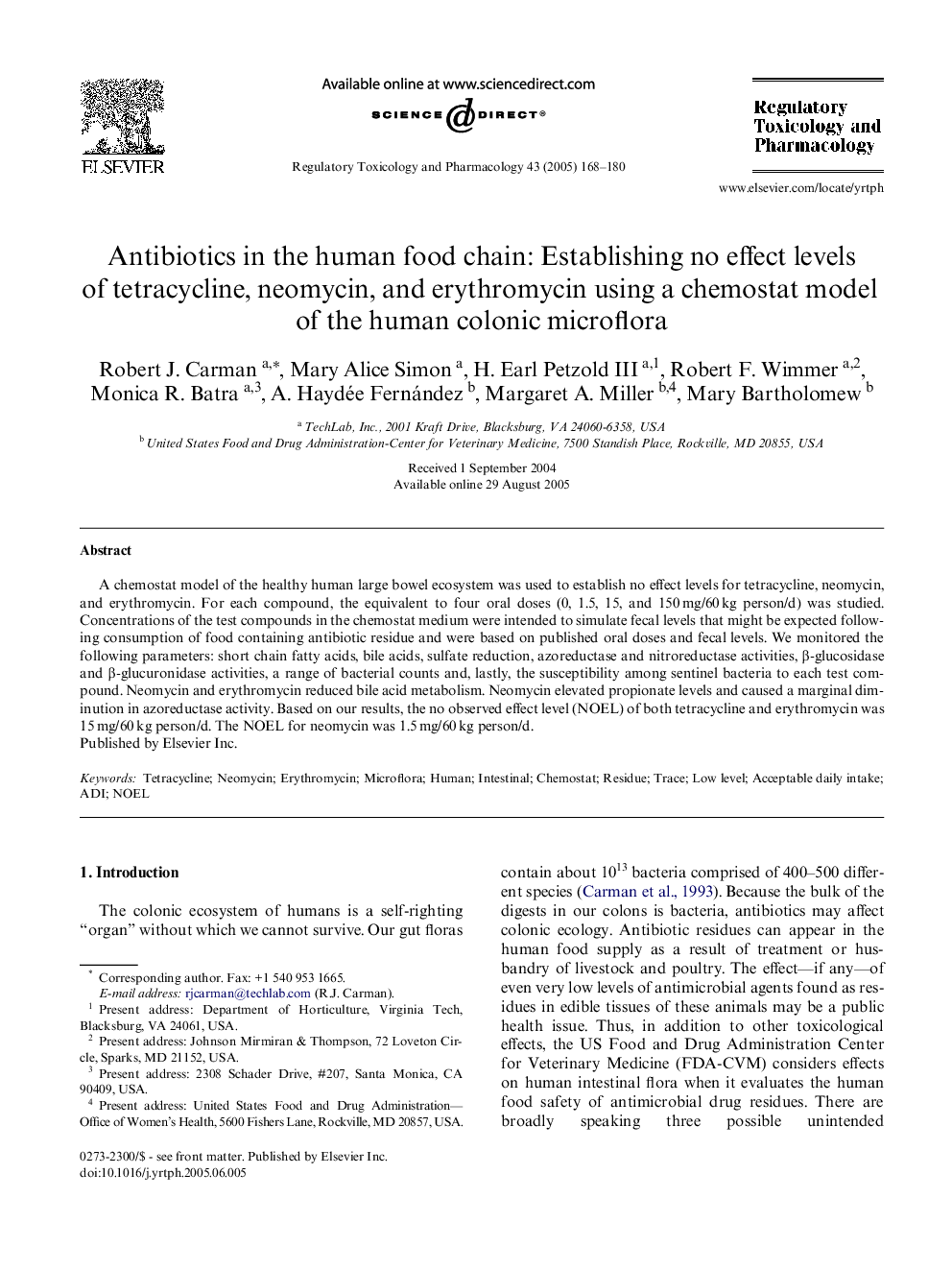| Article ID | Journal | Published Year | Pages | File Type |
|---|---|---|---|---|
| 9033563 | Regulatory Toxicology and Pharmacology | 2005 | 13 Pages |
Abstract
A chemostat model of the healthy human large bowel ecosystem was used to establish no effect levels for tetracycline, neomycin, and erythromycin. For each compound, the equivalent to four oral doses (0, 1.5, 15, and 150 mg/60 kg person/d) was studied. Concentrations of the test compounds in the chemostat medium were intended to simulate fecal levels that might be expected following consumption of food containing antibiotic residue and were based on published oral doses and fecal levels. We monitored the following parameters: short chain fatty acids, bile acids, sulfate reduction, azoreductase and nitroreductase activities, β-glucosidase and β-glucuronidase activities, a range of bacterial counts and, lastly, the susceptibility among sentinel bacteria to each test compound. Neomycin and erythromycin reduced bile acid metabolism. Neomycin elevated propionate levels and caused a marginal diminution in azoreductase activity. Based on our results, the no observed effect level (NOEL) of both tetracycline and erythromycin was 15 mg/60 kg person/d. The NOEL for neomycin was 1.5 mg/60 kg person/d.
Keywords
Related Topics
Life Sciences
Environmental Science
Health, Toxicology and Mutagenesis
Authors
Robert J. Carman, Mary Alice Simon, H. Earl III, Robert F. Wimmer, Monica R. Batra, A. Haydée Fernández, Margaret A. Miller, Mary Bartholomew,
